
Lecture Series Bundle - A Compilation of Advanced APTA Lectures
- Registration Closed
This course bundle will be available for purchase between Nov. 28 and Dec. 5 - be sure to mark your calendars!
Available for a short time only, register for a focused selection of 12 comprehensive APTA Lecture Series and Centennial Lecture Series courses. This course bundle gives you unlimited access to the 12 Lecture Series courses in the APTA Learning Center, totaling 9.6 CEUs, or 96 Contact Hours.
Please click the 'Content' tab to view the description of the courses offered in this bundle.
- Once registered, you have 90 days to complete as many courses as you want.
- To access the courses of your choice, you will first need to activate them by clicking the "Activate" buttons next to the courses
-
Contains 8 Component(s), Includes Credits
(APTA-COVID-22) This course will offer multiple perspectives on treating Long COVID (Post-Acute Sequelae of COVID) and help clinicians increase their confidence with managing this patient population.
This lecture is a can’t miss experience where you will hear the latest information on screening, referral, and care for Long COVID. As the value of PT in this population is recognized, referrals will increase either by medical providers or through direct access. As the COVID-19 pandemic continues, a significant group of patients who survive the disease experience long-lasting symptoms and negative effects on their health. These can include long-lasting effects on the heart, lungs, immune system, mental health, and overall quality of life. Such persistent “long-haul” complications have been reported by our patients and have been described in the medical literature, ranging from respiratory problems to exhaustion from even the slightest exertion, as well as nerve pain, persistent headaches, trouble concentrating, or memory trouble sometimes referred to as “brain fog.” Typically, the symptoms persist for weeks or months after someone has recovered from COVID-19.
The purpose of this course is to introduce the physical therapists and physical therapist assistants to the components of multidisciplinary long COVID care. This will allow therapists outside of “long COVID clinic” centers to understand the role of each discipline and recognize whom to consult when creating their own “clinic without walls” through referral networks and outreach in their communities. This course will highlight the key conditions that should be screened and when necessary, referred for clearance, before a long COVID rehabilitation program begins, and provide real world examples of physical therapy evaluations, treatments, and progressions. Come learn to avoid the pitfalls of treating patients with long COVID, and learn the value of pacing and many other “tricks of the trade” by those in the field.
Learning Objectives:
1. Learner will be able to define Long COVID and recognize its variable presentations.
2. Learner will be able to accurately screen for Long COVID sequelae/symptoms and understand referral needs for the patient population.
3. Learner will be able to identify examination techniques (test and measures) to identify impairments related to Long COVID.
4. Learner will demonstrate understanding of appropriate and effective interventions to manage Long COVID, including knowledge of progressions and regressions, to safely achieve patient goals.
5. Learner will understand the multi-disciplinary needs of this patient population.
6. Learner will demonstrate understanding of where to locate resources and further education related to Long COVID.
7. Learner will be able to identify appropriate outcomes measures to quantify progress of patient population.

Sophia "Fieke" Janson
PT, GCS
Fieke received her Physical Therapy degree from Virginia Commonwealth University in 1989. Sophia has over 30 years of clinical experience and has worked in a variety of settings including acute rehab, acute care, home health, outpatient orthopedics, and outpatient neuro rehab. She is an APTA credentialed clinical instructor and has served as an adjunct faculty member at Marymount University. Sophia is certified in LSVT Big. In addition, she obtained her APTA Geriatric Clinical Specialist certification in 2017. Sophia was instrumental in establishing the PT presence in the post-COVID clinic at the George Washington University medical faculty associates.

Jennifer Zanni
PT, DScPT
Dr. Jennifer Zanni is a board certified Cardiovascular and Pulmonary Specialist and works as a physical therapist with the Johns Hopkins Rehabilitation Network in Baltimore, Maryland. She has over 24 years of experience working with a variety of patient populations, but has a primary interest in the management of patients with complex medical conditions and with those who have survived critical illness. Dr. Zanni currently serves as a lead physical therapist with both the Johns Hopkins Post-Acute COVID-19 Team (PACT) and the Johns Hopkins Postural Orthostatic Tachycardia Syndrome (POTS) Program. Dr. Zanni is also a lecturer in the Department of Physical Medicine and Rehabilitation at the Johns Hopkins University.
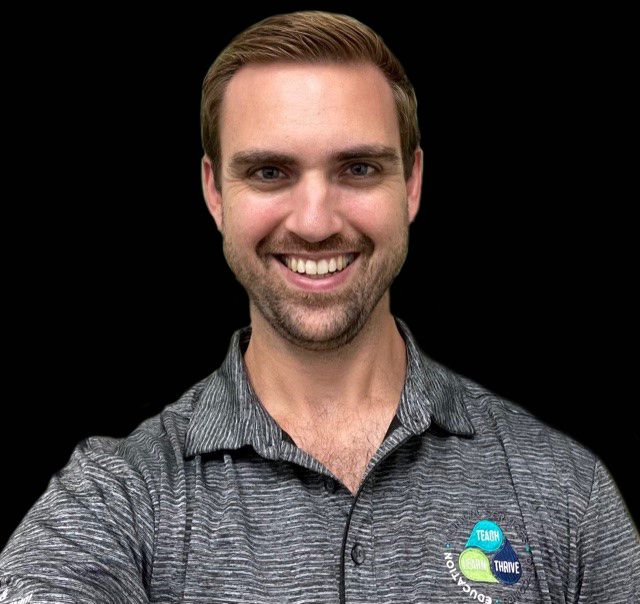
Corey Malone
PT, DPT
Corey completed his undergraduate degree in health and human performances in 2011 from the University of Louisville, and graduated with a doctorate in physical therapy in 2013 from Bellarmine University. Corey spent two years practicing orthopedic physical therapy in Baltimore before moving back to his hometown of Louisville, KY in 2016 where he began working at KORT. Corey completed an orthopedic residency program from KORT and was board certified in orthopedics in 2018. Since 2018, Corey has worked on creating and developing physical therapy programs to help improve the function of patients suffering from severe deconditioning due to conditions such as cardiovascular dysfunction and Long COVID. His clinical interests are in hands-on therapy, sports-related injuries, restoration of cardiovascular fitness and clinical decision-making. Corey enjoys living an active lifestyle with his wife and two daughters.
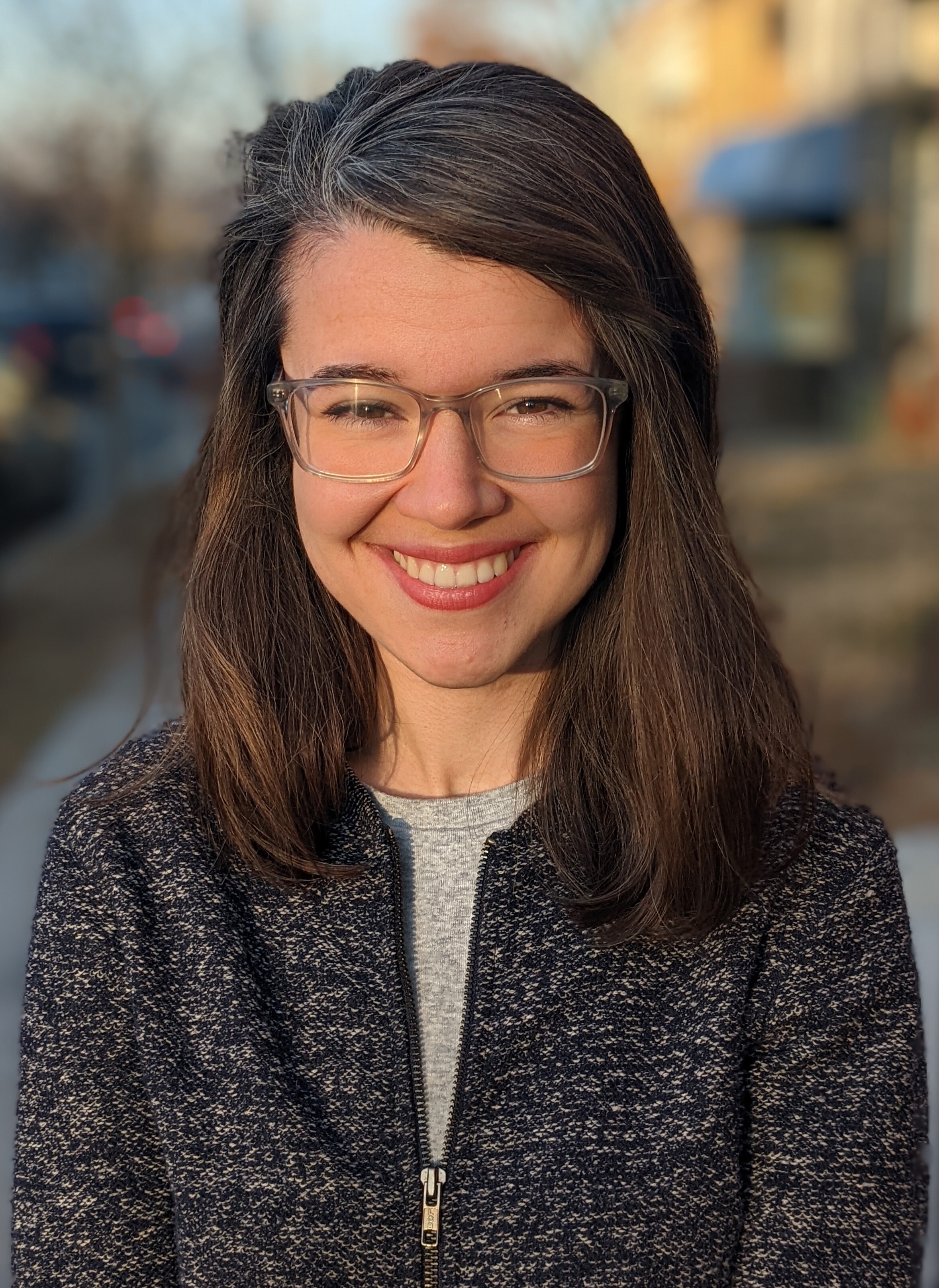
Rebecca Boersma
MA, CCC-SLP
Rebecca works as a speech-language pathologist at George Washington University Hospital in the Outpatient Rehabilitation Center, having received her Master's degree from the University of Minnesota. Rebecca focuses on person-centered, functional approaches for neurogenic disorders and treats patients with stroke, traumatic brain injury, mild cognitive impairment, dementia, and neuromuscular diseases. Rebecca first began working with patient with COVID-19 in acute care in 2020 and has since helped launch the Post-COVID-19 Outpatient Recovery Clinic to serve individuals with persistent cognitive, voice, and swallowing difficulties post COVID-19.
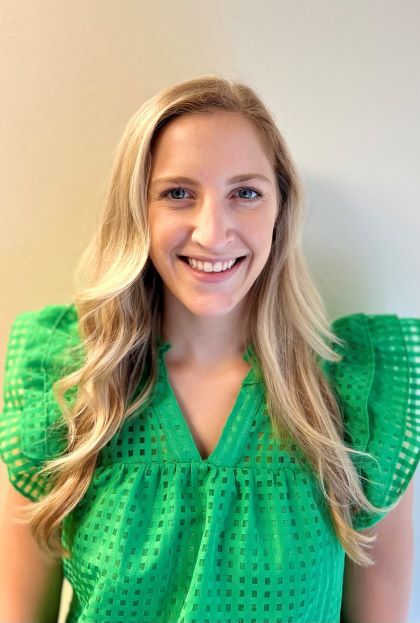
Becca Krysiak
MS, OTR/L, CBIS
Becca is an occupational therapist located at GWU Hospital Outpatient Rehabilitation Center. She has been based in DC since graduating from Thomas Jefferson University in 2017 with her Masters of Science in Occupational Therapy. She is always striving to further her knowledge and use evidence based tools, completing study in visual impairments after neurologic conditions, splinting for orthopedic and neurologic populations, concussion and TBI with her Certified Brain Injury Specialist, LSVT BIG and dance for Parkinson populations. She strives to use her dance, yoga, and swimming background to incorporate into her orthopedic, geriatric, and neurologic populations to allow for greater joy in exercise. Becca has participated in long COVID-19 therapy since 2020, working interdisciplinary with therapists and physicians to provide greater care to her patients.

Elisabeth Nickels
Ph.D.
Dr. Nickels is a counseling psychologist with expertise in health and rehabilitation psychology. She specializes in adjustment to acute and chronic illness, injury and disability, chronic pain management, and health psychology intervention. She is part of the Post-Acute COVID-19 Team (JH PACT) & Pain Clinic in the Department of Physical Medicine and Rehabilitation at Johns Hopkins University School of Medicine. Dr. Nickels obtained a master of arts degree and master’s in education in psychological counseling at Teachers College, Columbia University in New York. She completed a predoctoral internship in psychology at the Mount Sinai Medical Center, Department of Rehabilitation and Human Performance in New York and then obtained her doctoral degree in counseling psychology from Ball State University in Muncie, Indiana. She continued her training as a postdoctoral fellow in health psychology and psycho-oncology at Sutter Health California Pacific Medical Center in San Francisco. Research and clinical interests include the role of social and emotional factors in adjustment, health behaviors, and quality of life in prevention and management of acute and chronic health conditions. With a background in the arts, Dr. Nickels also has experience in teaching and performing music and theater.
Course Instructions
- Click on the Contents tab to watch the course recording.
- Click the Take Quiz button to complete the assessment. Learners will have 3 attempts to pass and must answer at least 70% of questions correctly.
- Click Fill Out Survey under the Evaluation listing to provide valuable course feedback. Scroll down on all questions as there may be answer options that expand past the size of the window.
- Click the View/Print Your Certificate button under the Certificate listing. You can view/print your certificate at any time by visiting the APTA Learning Center and clicking the CEU Certificate/Transcript link on the left-hand side of the page.
Need Assistance?
For assistance logging in, accessing activities, claiming credit, or for other questions or concerns, please e-mail learningcenter@apta.org.
-
Contains 8 Component(s), Includes Credits
(APTA-TENDON-22) This is the first lecture in the APTA Lecture Series for 2022. This course will provide an update on the current science of tendinopathy treatment, with a focus on immediate clinical translation. After completing this course, participants will have an understanding of tendon injury and healing, the clinical skills to evaluate and diagnose common lower extremity tendinopathies (gluteal, proximal hamstring, patellar, Achilles), established treatment protocols to implement in the clinic, and the ability to modify these protocols for unique or challenging case presentations.
Lower extremity tendinopathy is a painful and debilitating injury, which represents a substantial portion of orthopedic caseloads. As frustrating as this injury is for patients, it can be equally frustrating for clinicians to treat. The research guiding clinical practice has lagged more acute orthopedic injuries, symptoms may be slow to respond to treatments, and recurrence rates are high. This course will provide an update on the current science of tendinopathy treatment, with a focus on immediate clinical translation. After completing this course, participants will have an understanding of tendon injury and healing, the clinical skills to evaluate and diagnose common lower extremity tendinopathies (gluteal, proximal hamstring, patellar, Achilles), established treatment protocols to implement in the clinic, and the ability to modify these protocols for unique or challenging case presentations.
Learning Objectives:
- Describe the tendon injury and healing process.
- Conduct a comprehensive clinical exam for common lower extremity tendinopathies.
- Explain the basic mechanism of mechanotherapy for tendinopathy treatment and dosage parameters of established loading programs.
- Identify complicating factors that may diminish a patient’s response to established loading programs.
- Design an individualized loading program for patients with lower extremity tendinopathy, which accounts for complicating factors.
- Evaluated the utility of adjunctive treatments for patients with lower extremity tendinopathy.
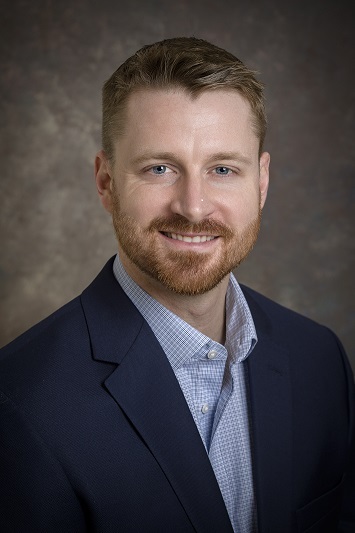
Andrew Sprague
PT, DPT, PhD
Dr. Andrew Sprague, PT, PhD, DPT is an Assistant Professor in the Department of Physical Therapy at the University of Pittsburgh. He completed his Doctor of Physical Therapy in 2015 at the University of Delaware (UD) and then completed his PhD under the advisement of Karin Grӓvare Silbernagel in the UD Tendon Research Lab (2020). His research and clinical practice have focused on evaluation and rehabilitation of lower extremity tendinopathies. The goal of Dr. Sprague’s research at the University of Pittsburgh is to identify measures that will allow for individualized load and recovery prescription for patients with overuse tendon injuries. Dr. Sprague has shared his research and clinical expertise at numerous national and international conferences and received honors for his work from the Foundation for Physical Therapy Research and the Imaging Special Interest Group of the American Physical Therapy Association.
Course Instructions
- Click on the Contents tab to watch the on-demand recording.
- Click Complete Post Test to complete the assessment. Participants will have 3 attempts to pass and must answer 12 out of 17 questions correctly.
- Click Complete Evaluation to provide valuable activity feedback. Scroll down on all questions as there may be answer options that expand past the size of the window.
- Click the button Claim Credits in the box titled Claim Credits & Certificate. Click the button View/Print Certificate to save or print your certificate. You can view/print your certificate at any time by visiting the APTA Learning Center, clicking Dashboard, and clicking Transcript/Achievements.
Need Assistance?
For assistance logging in, accessing activities, claiming credit, or for other questions or concerns, please e-mail learningcenter@apta.org
-
Contains 8 Component(s), Includes Credits
(APTA-MENTAL-22) This course is lecture 2 of the APTA Lecture Series 2022, in which presenters explore the psychological impairments associated with commonly diagnosed mental disorders, providing tools to incorporate interviewing, communication skills, and action-oriented patient education into the plan of care to promote the patient's self-responsibility and efficacy.
There is growing evidence that secondary prevention of costly and disabling musculoskeletal-related pain requires clinicians to 1) identify those patients at risk for becoming disabled with musculoskeletal pain, and 2) implement intervention strategies to address the cognitive and affective tendencies that coexist with the physical impairments associated with musculoskeletal pain. Physical therapists are equipped to be the leaders in preventing musculoskeletal pain and disability. The focus of this seminar is to introduce and train PTs in the skills to take this lead.
This training will enable physical therapists to improve their effectiveness in identifying psychological impairments associated with commonly diagnosed mental disorders. And then incorporate interviewing, communication skills, and action-oriented patient education to optimally structure therapist-patient relationships that promote the patient's self-responsibility and efficacy. This training will highlight clinical practice guideline recommendations providing strategies to prevent the progression of acute pain to chronic, disabling conditions. Patient education and counseling strategies discussed and practiced during this session will equip therapists with fundamental skills to address 1) personality disorders, such as paranoid, avoidant, borderline, or dependent disorders, 2) cognitive tendencies, such as anxiety or fear, 3) affective tendencies, such as depression, 4) pain catastrophizing, such as exaggerated pain experiences, and 5) generalized pain, such as maladaptive central nervous system sensitivity.
Learning Objectives:
Upon completion of this seminar, a participant will be able to:
- Identify and be motivated to alter common practice patterns that promote longstanding, chronic musculoskeletal pain.
- Describe the three practice dimensions driving the clinical decisions of clinicians working with individuals to prevent or manage chronic low back pain.
- Conduction an initial intake and follow-up sessions with a client using Motivational Interviewing.
- Perform an assessment to determine the presence of mental impairments in the form of cognitive or affective tendencies predictive of the progression of acute pain to chronic disabling pain.
- Implement education and counseling strategies specific to the presenting mental impairments of individuals with musculoskeletal pain, which have the best evidence to assist the individual with mitigating the progression toward chronic musculoskeletal pain
-
Contains 8 Component(s), Includes Credits
(LMS-Centennial-Pain) Growing evidence supports that teaching patients more about the neurophysiology and biology of pain allows for decreased pain, increased movement and function, various decreased psychometric measurements, and higher compliance with therapy.
Growing evidence supports that teaching patients more about the neurophysiology and biology of pain allows for decreased pain, increased movement and function, various decreased psychometric measurements, and higher compliance with therapy. This series of five lectures will instruct attendees about how to communicate with their patients about the neuroscience of pain, learn communication strategies that can help patients along their recovery path, recognize how brief remapping techniques can alter patient sensitivity and positively influence pain in real-life clinical practice, understand how various complex pain issues share some common features, and understand why a new bio-psycho-social approach is needed to address pain in orthopedic surgery.
Learning Objectives:
- Pain Neuroscience Education: Teaching People about Pain
- Analyze how common faulty cognitions impact pain and disability in people with pain
- Integrate the latest neuroscience of pain into clinical reasoning in people with persistent pain
- Explain to a patient how the body’s alarm system, the nervous system, becomes increasingly sensitive; how it impacts function and how therapy can help
2. Words That Harm and Words That Heal
- Develop and understanding how pain is produced by the brain based on perception of threat
- Recognize how many current models of reception/front office may not only “not help” but indeed increase a patient’s pain experience
- Utilize the latest pain neuroscience research to develop a front office approach that enhance patient care and customer service
3. Graded Motor Imagery for the Clinician
- Develop a greater understanding of the structural and functional changes in the brain as it pertains to pain.
- Recognize various clinical tests that can be used to screen for altered neuroplasticity.
- Recognize how brief remapping techniques can alter patient sensitivity and positively influence pain in real-life clinical practice.
4. Widespread Pain and Fatigue: Treat the Patient, not the Label
- Develop a biological and physiological understanding of widespread pain and fatigue
- Be updated on the latest evidence in regards to etiology, diagnosis, examination and treatment
- Be able to use pain neuroscience education to help patients develop a greater understanding of their pain experience and build an evidence-based treatment plan
5. Preoperative Pain Neuroscience Education
- Understand why a new bio-psycho-social approach is needed to address pain in orthopedic surgery
- Understand the development and validation process of the preoperative pain neuroscience education program for orthopedics
- Recognize why the preoperative neuroscience educational program produced superior results to the biomedical model utilized by US surgeons

Adriaan Louw, PT, PhD
VP Faculty Experience and Director of Pain Science
Evidence in Motion
Adriaan earned his undergraduate, master's degree and PhD in physiotherapy from the University of Stellenbosch in Cape Town, South Africa. He is an adjunct faculty member at St. Ambrose University and the University of Nevada Las Vegas, teaching pain science. Adriaan has taught throughout the US and internationally for 25 years at numerous national and international manual therapy, pain science and medical conferences. He has authored and co-authored over 80 peer-reviewed articles related to spinal disorders and pain science. Adriaan completed his Ph.D. on pain neuroscience education and is the Director of the Therapeutic Neuroscience Research Group - an independent collaborative initiative studying pain neuroscience. Adriaan is a senior faculty, pain science director and vice-president of faculty experience for Evidence in Motion.
Disclosure(s): BehaVR: Consultant/Advisory Board (Ongoing); EIM/Confluent Health: Employment (Ongoing), Ownership Interest ( includes stock, stock options, patent or other intellectual property) (Ongoing), Speaker/Honoraria (includes speakers bureau, symposia, and expert witness) (Ongoing); Medbridge: Speaker/Honoraria (includes speakers bureau, symposia, and expert witness) (Ongoing); OPTP: Ownership Interest ( includes stock, stock options, patent or other intellectual property) (Ongoing)
Course Instructions
- Click on the Contents tab to watch the course recording.
- Click the Take Quiz button to complete the assessment. Learners will have 3 attempts to pass and must answer at least 70% of questions correctly.
- Click Fill Out Survey under the Evaluation listing to provide valuable course feedback. Scroll down on all questions as there may be answer options that expand past the size of the window.
- Click the View/Print Your Certificate button under the Certificate listing. You can view/print your certificate at any time by visiting the APTA Learning Center and clicking the CEU Certificate/Transcript link on the left-hand side of the page.
Need Assistance?
For assistance logging in, accessing activities, claiming credit, or for other questions or concerns, please e-mail learningcenter@apta.org.
-
Contains 8 Component(s), Includes Credits
(LMS-Centennial-Concussion) This course explores the evaluation and management of post-concussion symptoms using 5 clinical subtypes, anxiety/mood, cognitive, ocular-motor, post-traumatic migraine, and vestibular, along with the modifiers of the cervical spine and sleep.
The Centers for Disease Control and Prevention estimates that 1.6-3.8 million sports- and recreation-related concussions occur each year in the U.S. Proper evaluation and treatment may lead to a more complete and timely recovery. This course will introduce evaluation and management of post-concussion symptoms using clinical subtypes. Anxiety/Mood, Cognitive, Ocular-motor, Post-traumatic migraine, and Vestibular subtypes will be discussed, along with the modifiers of Cervical and Sleep.
Learning Objectives:
1. Identify common abnormal examination findings following concussion for the five clinical subtypes
2. Identify interventions post-concussion symptoms based on clinical subtype
3. Identify factors that contribute to prognosis and outcome following concussion
4. Describe considerations to facilitate recovery and inform safe return to play

Lt. Col. Carrie Hoppes
PT, PhD, Board Certified Clinical Specialist in Neurologic Physical Therapy and Orthopaedic Physical Therapy
LTC Carrie W. Hoppes is an Associate Professor and Director of the Army-Baylor University Doctoral Program in Physical Therapy. In addition, she provides clinical care as a guest provider at Brooke Army Medical Center’s outpatient physical therapy clinic, specializing in treatment of patients with vestibular dysfunction. She earned a DPT from the U.S. Army-Baylor University Doctoral Program in Physical Therapy in 2006 and her PhD from the University of Pittsburgh in 2017. Her dissertation work utilized functional near-infrared spectroscopy to study the cerebral activation of individuals with visual vertigo during optic flow. She received Board Certification in the area of Neurologic Physical Therapy from the American Physical Therapy Board of Clinical Specialties in 2013. She has served as the Chief of Inpatient Physical Therapy and Amputee Physical Therapy at major military medical centers during her 18 years in the Army. She is an instructor for the Military Vestibular Assessment and Rehabilitation course.

Karen Lambert
PT, DPT, Board-Certified Clinical Specialist in Neurologic Physical Therapy
Dr. Karen H. Lambert currently serves as the Vestibular Program Manager for the Hearing Center of Excellence for the Department of Defense and Veterans Administration. In addition, she provides clinical care at a private outpatient physical therapy clinic specializing in treatment of patients with neurologic dysfunction. She earned a Master of Physical Therapy from MCP Hahnemann University in 2000 and her Doctorate of Physical Therapy from Drexel University in 2014. She received Board Certification in the area of Neurologic Physical Therapy from the American Physical Therapy Board of Clinical Specialties in 2006 and recertification in 2016. She served as the Officer in Charge of the Traumatic Brain Injury Section of Physical Therapy at Walter Reed Army Medical Center from December 2007-August 2010. She is Course Director of the Military Vestibular Assessment and Rehabilitation course and teaches proper assessment and treatment of Service members with dizziness often related to concussion.
Course Instructions
- Click on the Contents tab to watch the course recording.
- Click the Take Quiz button to complete the assessment. Learners will have 3 attempts to pass and must answer at least 70% of questions correctly.
- Click Fill Out Survey under the Evaluation listing to provide valuable course feedback. Scroll down on all questions as there may be answer options that expand past the size of the window.
- Click the View/Print Your Certificate button under the Certificate listing. You can view/print your certificate at any time by visiting the APTA Learning Center and clicking the CEU Certificate/Transcript link on the left-hand side of the page.
Need Assistance?
For assistance logging in, accessing activities, claiming credit, or for other questions or concerns, please e-mail learningcenter@apta.org.
-
Contains 8 Component(s), Includes Credits
(LMS-Centennial-BFR) This course will review the benefits of blood flow restriction (BFR) on patients with musculoskeletal conditions, pediatrics, and non-orthopedic diagnoses such as diabetes and Parkinson's disease. Further, a discussion on impacts of BFR on vascular diseases and bone quality after surgery will be discussed.
Exercise training with blood flow restriction (BFR) is becoming increasingly popular in rehabilitation, allowing skeletal muscle strengthening and hypertrophy to be accomplished using lower workloads, fewer repetitions, and shorter durations. These benefits have been seen across a variety of musculoskeletal conditions and age ranges, however the predominant clinical focus has been on the younger orthopedic patient. Recently clinical application and research has begun to focus on the application of BFR for the geriatric sarcopenic patient, pediatrics and non-orthopedic diagnosis such as diabetes and Parkinson's disease. Additionally, angiogenic benefits and bone sparing mechanisms have increased research interest in the use of BFR to address vascular diseases and improve bone quality after surgery.

Johnny Owens
PT, MPT
Johnny Owens iss CEO and Director of Clinical Education for Owens Recovery Science, a corporation recognized in the INC 500. He manages a research portfolio of over 40 clinical trials being conducted worldwide primarily studying the effects of Blood Flow Restriction Rehabilitation in clinical populations. He is the former Chief of Human Performance Optimization at the Center for the Intrepid (CFI) at San Antonio Military Medical Center and continues to serve as a consultant and clinical researcher at the CFI. He completed his undergraduate course work in Biology at The University of Texas at Austin and earned his Masters in Physical Therapy at The University of Texas Medical Branch. He serves as a medical consultant for teams in the NFL, NBA, MLB, NHL and collegiate sports.
He is involved in numerous clinical trials involving regenerative medicine, sports medicine, blood flow restriction and high-energy trauma. Owens has been published extensively in the peer-reviewed literature, regularly speaks at the national and international level and his work has been featured on 60 Minutes, Time Magazine, NPR, Discovery Channel and ESPN.
Course Instructions
- Click on the Contents tab to watch the course recordings.
- Click the Take Quiz button to complete the assessment. Learners will have 3 attempts to pass and must answer at least 70% of questions correctly.
- Click Fill Out Survey under the Evaluation listing to provide valuable course feedback. Scroll down on all questions as there may be answer options that expand past the size of the window.
- Click the View/Print Your Certificate button under the Certificate listing. You can view/print your certificate at any time by visiting the APTA Learning Center and clicking the CEU Certificate/Transcript link on the left-hand side of the page.
Need Assistance?
For assistance logging in, accessing activities, claiming credit, or for other questions or concerns, please e-mail learningcenter@apta.org.
-
Contains 8 Component(s), Includes Credits
(LMS-Centennial-Vestibular) Gain practical skills to diagnose and treat vestibular conditions like BPPV and peripheral vestibular hypofunction in this comprehensive course. Learn through real-world case studies and flexible video modules designed to enhance your clinical expertise. (0.8 CEU/8 contact hours)
This course helps you manage common vestibular conditions like BPPV and peripheral vestibular hypofunction. You'll learn to differentiate conditions, apply treatment techniques, and interpret nystagmus through real-world case studies. Gain practical skills to enhance patient care with flexible learning options.
Key Features & Benefits:
- Practical Skills: Master diagnostic and treatment techniques.
- Case Studies: Apply learning through real-world examples.
- Flexible Format: Five 90-minute videos with fast forward, rewind, and playback speed options.
- CEUs: Earn 0.8 CEUs/8 contact hours
Pricing:
- Promo Pricing (Until 2/28/2025):
- PT/PTAs: $159 | Post-Professionals: $79 | Students: $39 | Non-members: $249
- Regular Pricing (After 2/28/2025):
- PT/PTAs: $200 | Post-Professionals: $100 | Students: $50 | Non-members: $450
Learning Objectives:
- Understand the mechanics of the semicircular canals and macula in health.
- Interpret findings from common vestibular tests based on canal and macula mechanics.
- Use evidence-based rules to differentiate peripheral vs. central vestibular dysfunction.
- Identify and interpret typical and atypical nystagmus patterns during testing.
- Perform canalith repositioning maneuvers for BPPV treatment based on canal anatomy.
- Develop and implement vestibular rehab programs for peripheral hypofunction using VOR neuroplasticity principles.

Janet O. Helminski
PT, PhD
Dr. Helminski is a Professor of Physical Therapy at Midwestern University, and a physical therapist at Midwestern University Multispecialty Clinic. She received her PhD from Northwestern University’s Institute for Neuroscience. Her clinical focus is treating atypical BPPV and uncompensated peripheral vestibular hypofunction. Her current research includes differential diagnosis of atypical BPPV, acquired vertical diplopia, and acute vestibular syndrome in the emergency department.

Michael C. Schubert
PT, PhD, FAPTA
Dr. Schubert is a Professor in the Department of Otolaryngology Head and Neck Surgery as well as the Department of Physical Medicine and Rehabilitation at Johns Hopkins University. He completed his PhD at the University of Miami followed by a post-doctoral fellowship at Johns Hopkins. His clinical focus is treating gaze and gait instability in people with loss of vestibular sensation. His current research investigates novel methods for identifying pathology within the oculomotor system and differences in motor learning in the vestibulo-ocular reflex using different types of error signals.
Course Instructions
- Click on the Contents tab to watch the course recordings.
- Click the Take Quiz button to complete the assessment. Learners will have 3 attempts to pass and must answer at least 70% of questions correctly.
- Click Fill Out Survey under the Evaluation listing to provide valuable course feedback. Scroll down on all questions as there may be answer options that expand past the size of the window.
- Click the View/Print Your Certificate button under the Certificate listing. You can view/print your certificate at any time by visiting the APTA Learning Center and clicking the CEU Certificate/Transcript link on the left-hand side of the page.
Need Assistance?
For assistance logging in, accessing activities, claiming credit, or for other questions or concerns, please e-mail learningcenter@apta.org.
-
Contains 7 Component(s), Includes Credits
(LMS-Centennial-Mgmt) Physical therapists provide incredibly valuable services to their patients and their communities, yet our services are often laden with administrative burden and payment pressure.
Physical therapists provide incredibly valuable services to their patients and their communities, yet our services are often laden with administrative burden and payment pressure. Speakers will explore and explain compliance and optimal application of regulations that communicate the value of physical therapist services, resulting in a better bottom line.
In this course, speakers will review Medicare’s physical therapy documentation and billing requirements and discuss best practices. In addition, with the COVID-19 public health emergency and expansion of telehealth, speakers will review the recent telehealth policy changes and how physical therapy providers can implement telehealth in their practice with confidence that they are doing it legally and ethically.
Finally, guest speakers will provide an overview of HIPAA, self-referral, and anti-kickback statutes and regulations and discuss the implications of such laws for physical therapy providers.
Learning Objectives:
1. Describe Medicare Part B therapy documentation requirements and documentation best practices.
2. Develop thorough understanding of billing and coding best practices.
3. Identify recent telehealth payment and policy changes that could have an impact on your practice or organization.
4. Develop a thorough understanding of self-referral and anti-kickback laws and how they apply to physical therapy providers.
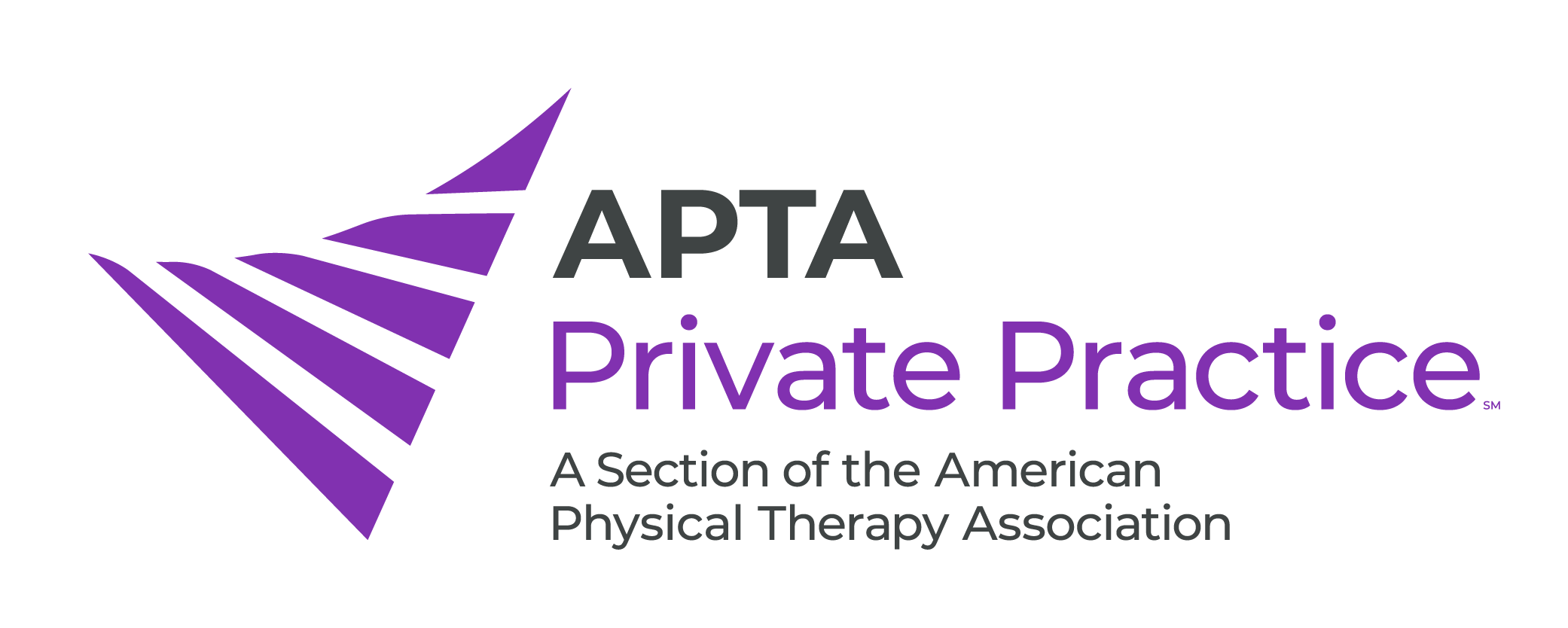
Lynn Steffes
PT, DPT
Dr. Lynn Steffes has over 35 years of experience as a physical therapist and over 25 years as a Healthcare Consultant, specializing in Private Practice Marketing, Compliance and Practice Management. She has served as adjunct or Guest Faculty for 6 Doctoral Physical Therapy Programs on business topics. Dr. Steffes has served on the Board of Directors for the Private Practice Section and speaks annually at every Private Practice Annual Meeting, as well as for the Section at the APTA Combined Sections Annual Meeting. She is also a frequent contributor to PPS Impact Magazine on marketing and a variety of business development topics and serves as the Wisconsin Physical Therapy Association Payment Specialist.
Dr Steffes is a passionate advocate for the Physical Therapy Profession and has served as a Key Contact for both PPS and the APTA. She has testified, helped in both reviewing and writing policies as they relate to PT Practice. She has been on faculty and involved in the curriculum development for the EPPM Program since its inception and also serves as a lead instructor for the EIM Business Course offered to EIM Residents and Fellows.

Kate W. Gilliard
JD
Kate is the director of health policy and payment at APTA. She has been working at APTA since 2018, first as a sr. specialist of policy and regulatory affairs, and since January 2022 in her new role as director. Before joining the association in 2018, she was policy expert for Centene Corporation, focusing on Affordable Care Act-compliant health care products. Her duties included monitoring state and federal legislative developments in the health care industry, developing company policy, and advocating on the corporation’s behalf to state and federal regulators. Prior to that, she was the ACA officer at the Illinois Department of Insurance, where she assisted the director in creating and implementing policies. She received her bachelor’s degree in English from Oklahoma State University and her law degree from DePaul University College of Law. She is a member of the Illinois Bar.

Steve Postal
JD, Senior Regulatory Affairs Specialist, American Physical Therapy Association
His areas of expertise include telehealth, administrative burden, LCDs/NCDs, and post-acute care. Before joining the association in 2019, he was a senior director of state policy for the Pharmaceutical Research and Manufacturers of America, focusing on legislative and regulatory policy development. Prior to that, he was the director of health policy at law firm Powers Pyles Sutter and Verville. Previous positions also include director of the Medicaid Resource Center at the National Association for Home Care and Hospice, contracts and grants specialist in clinical research administration for the MedStar Health hospital system, and associate at the Maryland Office of the Attorney General. He received his bachelor’s degree in history , with a minor in government, from Bowdoin College and his law degree with a concentration in health law from Case Western Reserve University School of Law. He is a member of the Maryland and District of Columbia bars.
Course Instructions
- Click on the Contents tab to watch the course recordings.
- Click the Take Quiz button to complete the assessment. Learners will have 3 attempts to pass and must answer at least 70% of questions correctly.
- Click Fill Out Survey under the Evaluation listing to provide valuable course feedback. Scroll down on all questions as there may be answer options that expand past the size of the window.
- Click the View/Print Your Certificate button under the Certificate listing. You can view/print your certificate at any time by visiting the APTA Learning Center and clicking the CEU Certificate/Transcript link on the left-hand side of the page.
Need Assistance?
For assistance logging in, accessing activities, claiming credit, or for other questions or concerns, please e-mail learningcenter@apta.org.
-
Contains 7 Component(s), Includes Credits
(LMS-Centennial-Bicyclist) This course will describe and demonstrate best practices for Physical Therapists clinical work with bicyclists, including a discussion on effective treatment interventions for the bicyclist.
Bicycling is a form of recreation, rehabilitation, and transportation. Bicycling should play an important role with population health. The inclusion of bicyclist evaluation to the physical therapy practice makes good sense. Bicycling is a form of "gait", it is movement. It is well established that irregularities of gait or movement are causal factors of movement disorders. It is no different with a bicyclist and their bicycle equipment. A bicyclist with a bicycle related movement disorder should be evaluated by a Physical Therapist to assess and treat root cause of movement disorder. One should argue that treating a bicyclist without observing their equipment and the use of their equipment is incomplete and inefficient treatment. This course will describe and demonstrate best practices for Physical Therapists clinical work with bicyclists. This course will provide and demonstrate effective treatment interventions for the bicyclist.
Patients/clients should bring their bicycling equipment associated with injury/episode of care for evaluation. Evaluation of bicyclists' equipment requires special equipment, basic evaluation tools, bicycle tools, the mechanical knowledge of how to use them, and the use of basic adaptive/bicycle equipment (stems, saddles, seatposts, pedals, etc).
This course will provide a historical perspective of "bike fit", bicycle positioning as it relates to the physical therapy profession. It will charge the physical therapy profession to consider bicycle-related niche practices. This will allow the public to lean more towards and trust the physical therapy profession to effectively manage their bicycle movement needs as it relates neurological and musculoskeletal issues.
The course will conclude with a lab session that demonstrates basic evaluative and intervention strategies.
Learning Objectives:
- Describe basic endurance bicycling posture.
- Describe basic bicycling function (pedaling, bicycle handling).
- Be able to list necessary equipment for evaluation of the bicyclist.
- Demonstrate basic static evaluation of the bicyclist.
- Demonstrates basic dynamic evaluation of a bicyclist.
- Be able to make reasonable accommodations/recommendations to improve a bicyclist’s condition.
- Be able to prescribe effective forms of adaptive exercise for the improved tolerance of bicycling.

Erik Moen
PT
Erik has been a proud American Physical Therapy Association member since October 1990. He is a 1992 Physical Therapy graduate of the University of Washington. He attained a Bachelor of Science degree in Biological Research from Pacific Lutheran University (1989). Erik holds active memberships in the American Academy of Sports Physical Therapy and the Private Practice Section. He owns and operates Corpore Sano Physical Therapy in Kenmore WA. His primary practice is with bicyclists and extremity rehabilitation. Erik owns and operates BikePT. BikePT is a continuing education program for the Physical Therapy profession. He has been teaching bicycling niche practice to the physical therapy profession since 1993. His education programs have inspired numerous PTs from around North America to pursue bicycle niche practices.
Erik has been an active and involved member in the APTA. He has held various governance roles, student representative to state boards and House of Delegates, APTA committee member, APTA task force member, Chief Delegate, Delegate, and Washington Chapter President. He was consulted for APTA's Physical Therapy Month campaign of "Bike Fit, Bike Right".
Erik is a lifetime bicyclist. His bicycling involvement has included racer (road, track, cyclocross, mountain bike), coach, soigneur/physio, team director, bike shop employee, author, speaker, consultant and paracycling classifier. His most current work with bicycling is through paracycling and paracycling classification. He is a national classifier with USA Paracycling and an international classifier with International Cycling Union (UCI). He currently holds an appointment to the UCI classification committee with specialty in technical aspects of paracycling.
Course Instructions
- Click on the Contents tab to watch the course recordings.
- Click the Take Quiz button to complete the assessment. Learners will have 3 attempts to pass and must answer at least 70% of questions correctly.
- Click Fill Out Survey under the Evaluation listing to provide valuable course feedback. Scroll down on all questions as there may be answer options that expand past the size of the window.
- Click the View/Print Your Certificate button under the Certificate listing. You can view/print your certificate at any time by visiting the APTA Learning Center and clicking the CEU Certificate/Transcript link on the left-hand side of the page.
Need Assistance?
For assistance logging in, accessing activities, claiming credit, or for other questions or concerns, please e-mail learningcenter@apta.org.
-
Contains 7 Component(s), Includes Credits
(LMS-Centennial-Runner) This course will review the current literature on running retraining and help the clinician to identify subgroups of patients that would best benefit from running retraining. Additionally, this course will help the clinician to identifying risk factors in the runners training program, build confidence in performing in-clinic running analysis, and help to provide the clinician the skill set to develop a comprehensive program in order to optimize return to run programs.
As clinicians we want to provide more to our injured runners than a walk to jog progression. Through this course, learn an evidence-based approach to treating the injured runner. This course will review the current literature on running retraining, and help the clinician to identify subgroups of patients that would best benefit from running retraining. Starting from the initial evaluation, this course will help the clinician to identifying risk factors in the runners training program, build confidence in performing in-clinic running analysis, and help to provide the clinician the skill set in development of a comprehensive program in order to optimize return to run programs. This course will be a mixture of lab and lecture.
Learning Objectives:
- Describe evidence-based literature on risk factors associated with running related injuries, and diagnosis’s that would best benefit from running retraining.
- Learn utilization of technology to perform a running form analysis in the clinic.
- Be able to develop a comprehensive rehabilitative plan for the injured runner to include mobility, proprioception, strength, and running skills in order to optimize return to run programs.

Eliza Szymanek
DPT, DSc
Eliza is currently serving as an Assistant Professor through Baylor University, and is the Clinical Program Director of the Army Baylor Doctorate of Physical Therapy internship at Joint Base Lewis McCord. Eliza is a certified orthopedic and sports physical therapist, as well as a certified strength and conditioning specialist. She graduated from the Army-Baylor Doctorate of Physical Therapy Program in 2010, and then from the Keller Army Community Division I Sports Physical Therapy Fellowship in 2017. Eliza has been instructing running retraining within the military setting for the last 10 years of her clinical practice. She has also conducted research in the field of running retraining.
Course Instructions
- Click on the Contents tab to watch the course recordings.
- Click the Take Quiz button to complete the assessment. Learners will have 3 attempts to pass and must answer at least 70% of questions correctly.
- Click Fill Out Survey under the Evaluation listing to provide valuable course feedback. Scroll down on all questions as there may be answer options that expand past the size of the window.
- Click the View/Print Your Certificate button under the Certificate listing. You can view/print your certificate at any time by visiting the APTA Learning Center and clicking the CEU Certificate/Transcript link on the left-hand side of the page.
Need Assistance?
For assistance logging in, accessing activities, claiming credit, or for other questions or concerns, please e-mail learningcenter@apta.org.












